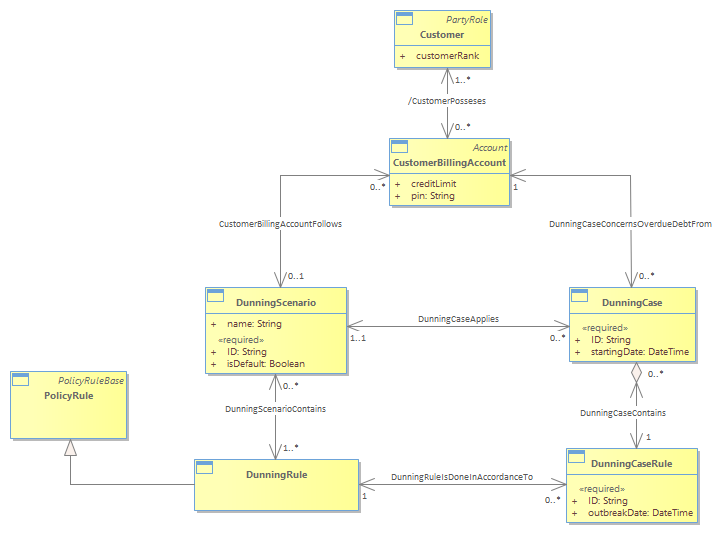Figure C.22 - Dunning Scenario and Case

|
Project:
|

Figure C.22 - Dunning Scenario and Case : Class diagram
The Dunning ABE is part of the Customer Bill Collection ABE.<br/>This section is intended to define the scope of information used by the dunning process.<br/>More precisely, this section describes information produced and consumed by the level 3 business processes from eTOM<br/> • 1.1.1.11.3 Manage Customer Debt Collection <br/> • and 1.1.1.1.14 Support Bill Payments & Receivable Management<br/>The following Figure C.22 – Dunning Scenario and Case presents the dunning scenario and the corresponding cases.<br/>Each provider/operator has to define its dunning strategy. This strategy is described by DunningScenario. Each DunningScenario contains the dunning rules to apply to a case, the order in which applying them, the events that trigger dunning rules evaluation, the actions that must be done, and so forth.<br/>The DunningCaseRules are specified by DunningRule that is a type of PolicyRule. <br/>This allows specifying for each dunning rule: <br/> • the events that trigger the evaluation of the rule (Ex: due debt not paid after 8 days<br/> • conditions that have to be evaluated (Ex: no bill dispute in progress) <br/> • and actions that must be done (Ex: send a dunning letter).<br/>A DunningScenario is assigned to a CustomerBillingAccount, depending on the Holder quality (Ex: a more tolerant DunningScenario is assigned to VIPs).<br/>If no specific DunningScenario is assigned to a CustomerBillingAccount, a default scenario is applied.<br/>As soon as an event triggering a DunningRule occurs on a CustomerBillingAccount, a DunningCase is created according to the DunningScenario assigned to the CustomerBillingAccount.<br/>
|


